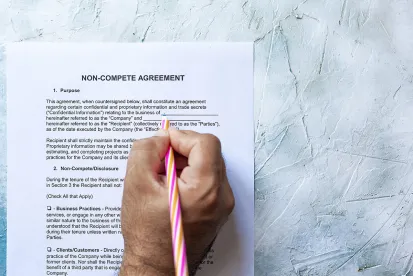As we recently reported, on January 5, 2023, the Federal Trade Commission proposed a rule banning the use of non-compete covenants in nearly all circumstances. The FTC is seeking comments on the proposed rule until March 20, 2023. Even if the proposed rule or a variation of it is ultimately implemented, it will likely face a multitude of legal challenges. To learn more about this proposed rule, please see our recent webinar recording here. Note: Guests will have to register, then can click on the View Content link. A new browser window will pop up with the recording.
Nevertheless, in the immediate aftermath of this proposed rule, employers are asking, “what now?” In recent years, we have been forewarned of the impending threat to the use of non-compete covenants and emphasized the need for employers to protect their confidential information through other means. Regardless of the outcome of the proposed rule, the FTC’s action is a reminder that non-compete covenants are under ever increasing scrutiny and criticism, and employers must consider alternative ways to protect their confidential and trade secret information.
Over a year and a half ago, we encouraged employers “to revisit the protections they have in place to protect trade secret and confidential information and their investments in employee training.” Especially in light of the FTC’s announcement, we reiterate that employers would be wise to revisit those protections and engage in a thorough three-step process to evaluate, identify and protect their confidential and competitive information. The steps include:
1. Conducting a comprehensive review and identification of the company’s competitive, confidential and trade secret information;
2. Identifying who has access to that information; and
3. Evaluating how to best protect that information (potentially without the use of non-competes).
While this auditing process takes time and energy and is not a one size fits all solution, it is an investment in the protection of competitive information that will pay dividends if the need to protect that information through litigation ever arises.
Generally, some of the safeguards the employer can use to protect this information include:
-
Ensuring access to shared files is on a need-to-access basis only;
-
Limiting access to client information to only those clients whom a particular employee services;
-
Limiting access to research and development information to only those individuals in research and development who are working on the particular project;
-
Republishing policies forbidding the use of personal email accounts for business purposes;
-
Implementing safeguards for the electronic mailing and sharing of confidential documents;
-
Having employees acknowledge/reaffirm their understanding that company competitive information is owned by the company and only certain people are allowed access;
-
Utilizing non-solicitation covenants in appropriate circumstances.
Identifying and ensuring adequate protection for competitive information is paramount, given the ongoing threats to the viability of non-compete agreements – both at the state and federal levels.



 />i
/>i
